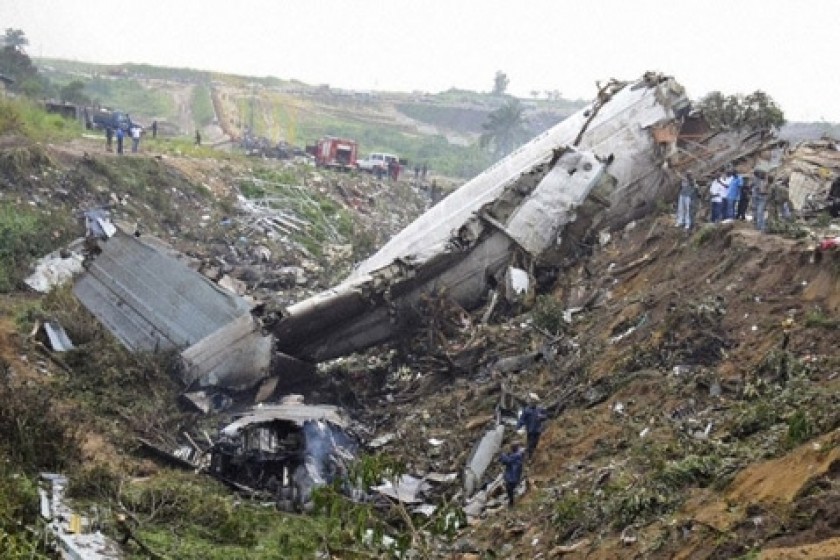
The Turbulent World of Armenian Airlines
By Vahe Sarukhanyan and Edik Baghdasaryan
Narineh Hayrapetyan leaned on the fireplace as she talked, red-eyed, near photographs of her husband, flight engineer Andranik Gevorgyan, displayed on the mantle.
On November 30, 2012, his Ilyushin Il-76 plane crashed in a residential area about 500 meters from the Maya-Maya Airport in Brazzaville, the capital of the Republic of the Congo. The 36-year-old plane, manufactured at a Soviet-era Ilyushin factory in Uzbekistan and registered as EK-76300, was on a short 400-kilometer cargo flight from the Atlantic Coast city of Pointe-Noire to the capital.
Five Armenian crew members -- including Gevorgyan -- died in the accident, according to the Armenian Ministry of Foreign Affairs. Besides Gevorgyan, Captain Varazdat Balasanyan, former head of the Stepanakert airport, Ara Tovmasyan, Tadevos Hovhannisyan, and Edgar Avetyan all lost their lives. According to the Congolese Red Cross, 32 people included two Congolese police officers were killed and 20 were injured on the ground in the neighborhood where the plane struck.
The disastrous crash raises questions about the safety of aging Armenian planes, how they are regulated and improprieties in their registration that often cause family members grief long after the funerals. Since 2004, planes owned or registered to Armenian outfits -- and often flown by Armenian crews looking for work outside their native country -- have been involved in a number of dangerous and deadly incidents. Authorities in the countries involved, the airlines and even the manufacturer do not appear interested in looking too closely at the cause of the crashes. The real loss is by the families who lose loved ones and then are never compensated even for their loss, in part because of the irregularities in the registrations.
Narineh Hayrapetyan is one of those family members. “The last time we spoke was three hours before the flight,” the engineer’s widow said tearfully. “We spoke for some time and his attitude was normal. He was asking how everyone was. He was always like that; concerned about how friends and relatives were.” Hayrapetyan missed the original TV reports of the crash. Janik, Andranik’s older brother, told the family what had happened the next day. The widow said she held out hope about her husband. But that hope died out quickly.
Finding a Cause
The plane created a huge crater when it crashed short of the runway.
The plane crashed in bad weather -- wind and heavy rain. Nelli Cherchinyan, Press Secretary of the General Department of Civil Aviation of Armenia, reported that according to preliminary information, lightning struck the plane's wing, causing the crash.
Airplane accidents are almost always caused by a number of factors including age, condition, weather, servicing and other issues that align in a deadly pattern. Typically, airplane crashes are investigated by the airline manufacturer, local authorities and sometimes the country of ownership of the plane. But neither Armenia nor the Congo wished to be considered the country of ownership.
Svetlana Suleymanova, head of the Public Affairs Department of the Ilyushin Aviation Complex, told OCCRP that her company had not serviced the plane before it crashed although it is possible other certified companies repaire.
 Videos
Videos Photos
Photos
Write a comment